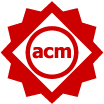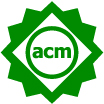Improving IR-Based Bug Localization with Context-Aware Query Reformulation
Mohammad Masudur Rahman and Chanchal K. Roy
Poster: Improving Bug Localization with Report Quality Dynamics and Query Reformulation
Mohammad Masudur Rahman and Chanchal K. Roy
Abstract: Recent findings suggest that Information Retrieval (IR)-based bug localization techniques do not perform well if the bug report lacks rich structured information (e.g., relevant program entity names). Conversely, excessive structured information (e.g., stack traces) in the bug report might not always help the automated localization either. In this paper, we propose a novel technique--BLIZZARD-- that automatically localizes buggy entities from project source using appropriate query reformulation and effective information retrieval. In particular, our technique determines whether there are excessive program entities or not in a bug report (query), and then applies appropriate reformulations to the query for bug localization. Experiments using 5,139 bug reports show that our technique can localize the buggy source documents with 7%--56% higher Hit@10, 6%--62% higher MAP@10 and 6%--62% higher MRR@10 than the baseline technique. Comparison with the state-of-the-art techniques and their variants report that our technique can improve 19% in MAP@10 and 20% in MRR@10 over the state-of-the-art, and can impro 59% of the noisy queries and 39% of the poor queries.
- ecf (553)
- eclipse.jdt.core (989)
- eclipse.jdt.debug (557)
- eclipse.jdt.ui (1,115)
- eclipse.pde.ui (872)
- tomcat70 (1,053)
Total Bug reports: 5,139
Baseline Method
Query:Baseline queriesResults:Top-10 returned results by the baseline queriesQE:Query Effectiveness of baseline queries.
BLIZZARD-Proposed Method
Query:Reformulated queries by our technique.Results:Top-10 returned results by our queries.Result-Matched-Indices:Result indices matched with goldsetQE:Query Effectiveness of our queries.
Bug Report & Goldsets
BR-Exceptions:Exceptions extracted from BR-ST group of each subject systemBR-ST-StackTraces:Stack traces extracted from BR-ST group of each subject systemBR-Classes:Bug report classes of each subject system-- BR-ST, BR-PE, BR-NL, BR-ALL.BR-Raw:Raw content from 5,139 bug reports from six systemsGoldset:Change set for 5,139 reported bugs
System Corpora & Lucene Indices
Corpus:Source code corpus for six subject systems where original file names are replaced with indices.Lucene-Index2File-Mapping:Corpus file index to original file name mappingLucene-Index:Lucene index for code search
BLIZZARD Prototype & External Dependencies
blizzard-runner.jar:Our proposed toolSOURCE-CODEBLIZZARD-1.0.0 and BLIZZARD-2.0.0. Go ahead and extend.data:Data folder required for the toolmodels:Models required for the tooltbdata:Data folder required for the tool
Installing, Building and Execution
README:Tool overview, artifact details and required commands for the tool's execution.INSTALL:System requirements and installation detailssample-input:Sample input directorysample-output:Sample output directory
Licensing & Others
LICENSE:Our artifacts are under MIT licenseSTATUS:It shows our requested badge and the rationale.CITATION:It shows how this work should be cited.Screenshots:It contains the screenshots of the available operations.
- Create reformulated query, i.e.,
reformulateQuery - Collect/evaluate localization results, i.e.,
getResult - Show replicated bug localization performances from raw data, i.e.,
getReportedBLPerformance - Show replicated query effectiveness performances from raw data, i.e.,
getReportedQEPerformance
- -task : expects a task to be performed
- -repo : expects the name of a system.
- -queryFile: file to store the reformulated queries
- -bugIDFile: file containing the bug IDs
- -topk : expects the number of results to be analyzed.
- -resultFile: file to store the localization results
- -reportKey: expects one of the three bug report classes (e.g., ST, PE, NL)
- Download all items from GitHub using
git clonecommand, and keep in/homefolder. - Unzip all zip files, and make sure that they are in the home directory. For example, ecf in Goldset.zip should be
/home/Goldset/ecf - Run the tool from within the home directory.
java -jar blizzard-runner.jar -task reformulateQuery -repo ecf -bugIDFile ./sample-input/sample-bugs.txt -queryFile ./sample-input/sample-query.txt
Currently, the tool extracts raw bug reports from "BR-Raw" folder using the sample input Bug-IDs and then reformulates the reports.
BugID1 Reformulated-query
BugID2 Reformulated-query
BugID3 Reformulated-query
..........................................................
java -jar blizzard-runner.jar -task getResult -repo ecf -queryFile ./sample-input/sample-query.txt -topk 10 -resultFile ./sample-output/sample-results.txt
The above command collects Top-10 results and reports Hit@10, MRR@10, MAP@10 for the queries.
If you want to extract all the results rather than Top-K only, you can set -topk to a big number, 100000 to get all the results. This provides the ranking of all source code files for each given query.
DISCLAIMER: Currently, the tool provides system specific results. Hence, the performances reported at Table 5 (of the paper) can be found by averaging the results from all 6 subject systems.
You can set -topk to a big number, 100000 to get all the results. This provides the ranking of all source code files for each query which can be then used to determine the Query Effectiveness (QE).
java -jar blizzard-runner.jar -task getReportedBLPerformance -topk 10 -reportKey ST
This command shows Hit@10, MRR@10, MAP@10 for all 6 subject systems, and their mean measures (as shown in Table 5)
java -jar blizzard-runner.jar -task getReportedQEPerformance -reportKey ST
This commands shows query improvement, query worsening and query preserving statistics across all 6 subject systems (as shown in Table 9).
@INPROCEEDINGS{fse2018masud,
author={Rahman, M. M. and Roy, C. K.},
booktitle={Proc. ESEC/FSE},
title={Improving IR-Based Bug Localization with Context-Aware Query Reformulation},
year={2018},
pages={621-632}
}
@INPROCEEDINGS{icse2018masud,
author={Rahman, M. M. and Roy, C. K.},
booktitle={Proc. ICSE-C},
title={Improving Bug Localization with Report Quality Dynamics and Query Reformulation},
year={2018},
pages={348-349}
}
Contact: Masud Rahman (masud.rahman@usask.ca)
OR
Create an issue from here



